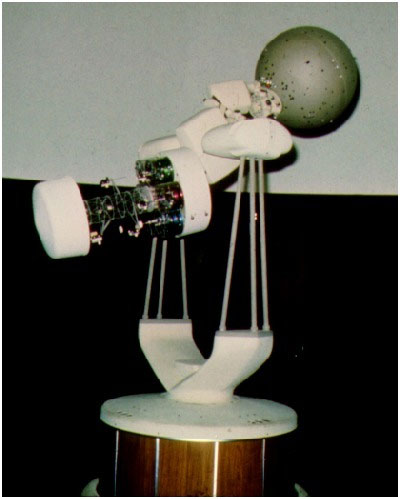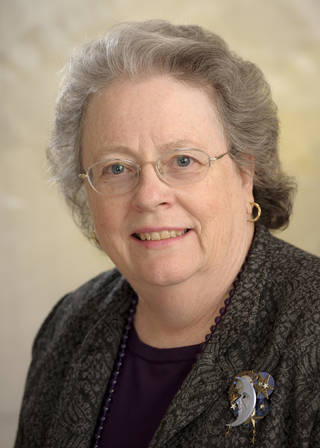Dome, Sweet, (Portable) Dome

Last week,I had the opportunity to attend WAC – Western Alliance Conference – in Fairbanks, Alaska, and connect with many people from my former career as a planetariumdirector. Yep, I?m an ex-planetarium director. For more than 2 decades, Itaught astronomy and presented planetarium shows under the dome for people fromK to gray – students, teachers and the public. In the early 1990s I moved toLawrence Hall of Science for a year, and then on to the SETI Institute where Idirect education and outreach today. I have a fond spot in my heart for peoplewho share their love of science under the dome, and enjoyed attending themeeting.
But, likeall technology, things have changed radically since the early 1970?s when I gotmy start as an assistant at the Sierra College Planetarium in Rocklin, CA.Sierra had a "cutting edge" planetarium: the latest Spitz A-4optical-mechanical projector, dual back-projection screens, built-in studentresponse systems, and a nice sound system. A few years after I began work there,we added six 35 mm slide projectors around the dome that would cross fadeimages for the hot, new 3-screen "multimedia" experience. Ourofferings expanded from astronomy to nature programming that took people onphotographic trips to the redwoods, the California coast, and other scenicareas. College astronomy classes, field-trip groups from schools, and thepublic all used the planetarium.
In 1977, Igraduated, so to speak, and became the director of the Independence High SchoolPlanetarium in San Jose, CA. It had the latest "cutting edge"planetarium from Spitz: the 512 ATM-2 which offered automation for shows. And,there were at least 12 35 mm slide projectors, special effects projectors, andsuch to choreograph. I won?t go into the amount of time spent preparing thevisuals for each program (via clever photographic masking techniques and tinypaint brushes used under microscopes ? computer animation was not thenavailable) but I?m getting ahead of my story. After a few years, I added videoprojection and amassed a collection of laser video disks (the size of LPrecords) that allowed me to integrate motion video into planetariumprogramming. We flew over Olympus Mons, and down through Valles Marineris. Wecrashed into icy moons orbiting Uranus, and peered beneath the clouds thatcover Venus. I had video projected on about one-fourth of my dome, just infront of all visitors. It was the "cutting edge" in planetariumprogramming.
All-skyvideo systems began to appear in the late-70s and early 80s. Instead of usingthe projected stars as stellar wallpaper behind a multi-media slide show, the"bleeding edge" was multiple video projectors that covered the dome,with blended seams. Planetariums became immersion theaters for spaceexperiences. Planetarium projectors also underwent a radical remodel fromoptical-mechanical systems that showed the sky as seen from Earth, tocomputer-based systems that projected the universe from any place you cared tolinger. Like Captain Picard on "Star Trek," you could "make itso" and zoom off through space to near and distant stars, leaving behindthe classic geocentric view of traditional planetariums. These systems haveevolved in parallel with Moore?s law in the computer industry, and today,all-dome, full color, hi-res video paints the sky in planetarium domes.Theaters like the HaydenPlanetarium at the Rose Center in New York City build programs based on thedata from the latest astronomical research and theoretical modeling. Today,there are more than 300 digital theaters worldwide, with more coming onlineevery day.
At the WACmeeting in Alaska, three portable domes (think: globe-shaped tents held up withair pressure provided by a fan) took one and all on adventures through thesolar system, and on out into the galaxy. They also took us on tours of fantasylandscapes, impressionist art, Egyptian tombs, and exotic locations. One youngstudent was heard to remark that "this is what television should be"upon emerging from the dome. Planetariums have become immersion theaters thatenvelop the viewer in environments from nano-particles to the entire universe.They are exciting places to create visual experiences that carry visitors tootherwise inaccessible places and times.
Although, Iam sentimental about the realistic and beautiful skies of traditionaloptical-mechanical projectors, they are largely historical artifacts. Today,the game is all-sky digital video that provides the "traditionalexperience" of the Earth?s starry sky, and so much more ? so, take me toSirius, please.
Visit the Hayden Planetariumwebsite.
Breaking space news, the latest updates on rocket launches, skywatching events and more!
- The Top 10 Space Imaginations at Work
- Apollo Astronaut Brings Space to Chicago Planetarium
- A New Light Shines at Los Angeles' Griffith Observatory

Edna DeVore is a science and astronomy educator and the former Director of Education and Public Outreach for the SETI Institute. She earned an undergraduate degree from the University of Pacific followed by a master's degree in instructional technology from San Jose State and a master's in astronomy from the University of Arizona. In 1992, Edna joined the SETI Institute, where she wrote features on space exploration, astrobiology and more, some of which appeared on Space.com. She was among the first principal investigators to propose projects to NASA's Office of Space Science and receive funding for educational programs. Edna went on to work on education and public outreach for NASA's Kepler space telescope and SOFIA flying telescope missions. Edna received numerous awards during her tenure at SETI, including NASA Honor Awards for her work on Kepler and SOFIA, and Aerospace Awareness Award for Women in Aerospace in 2005. Edna retired in 2013.
